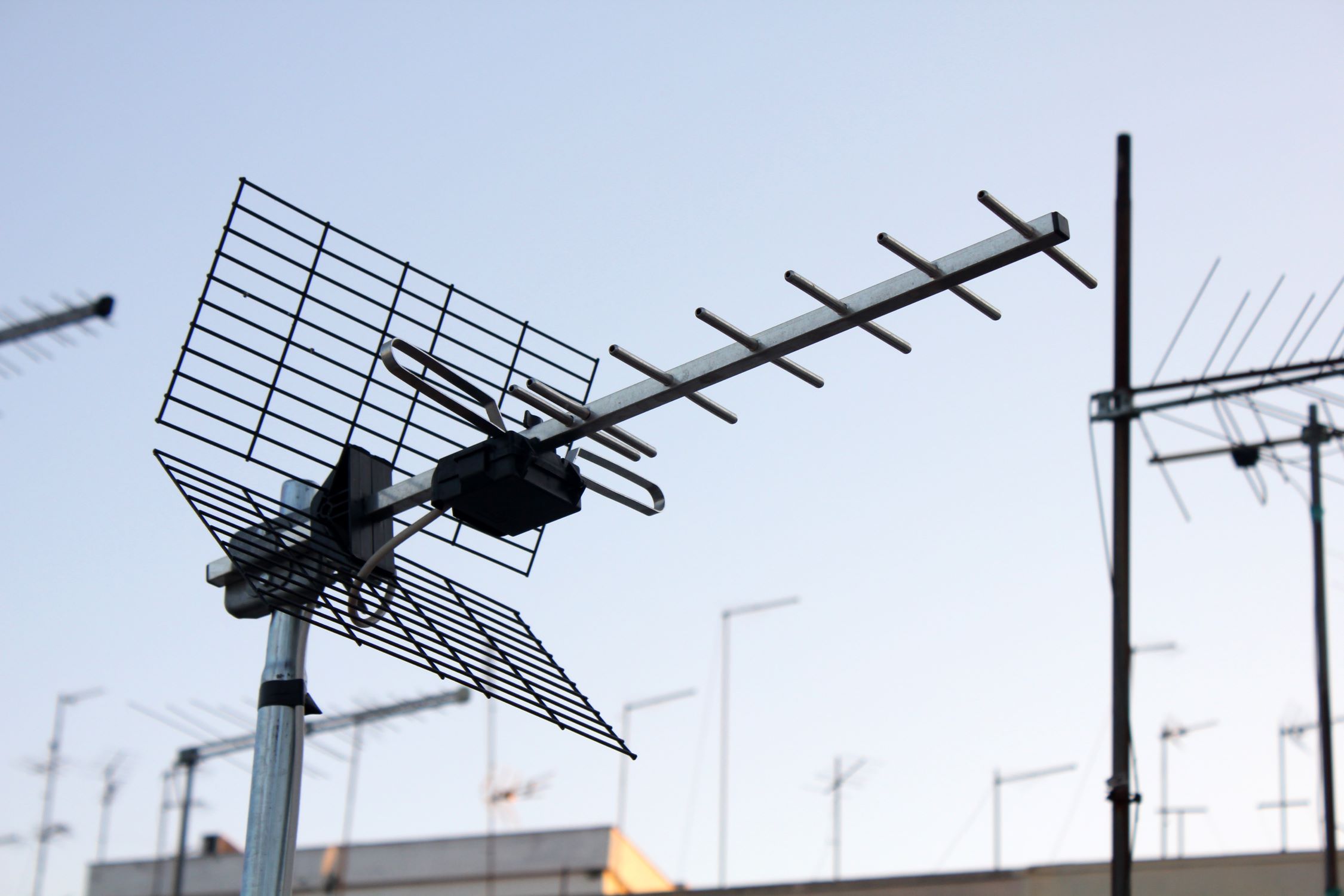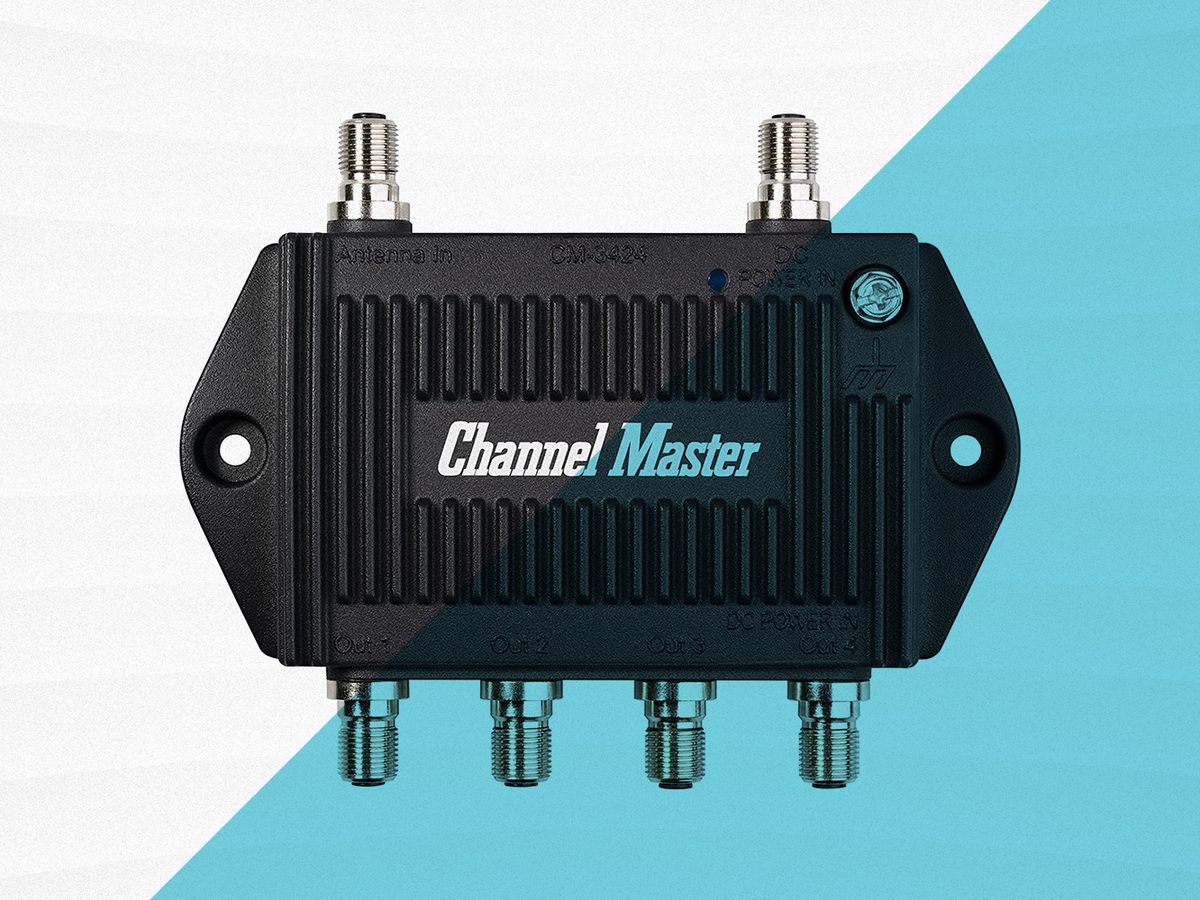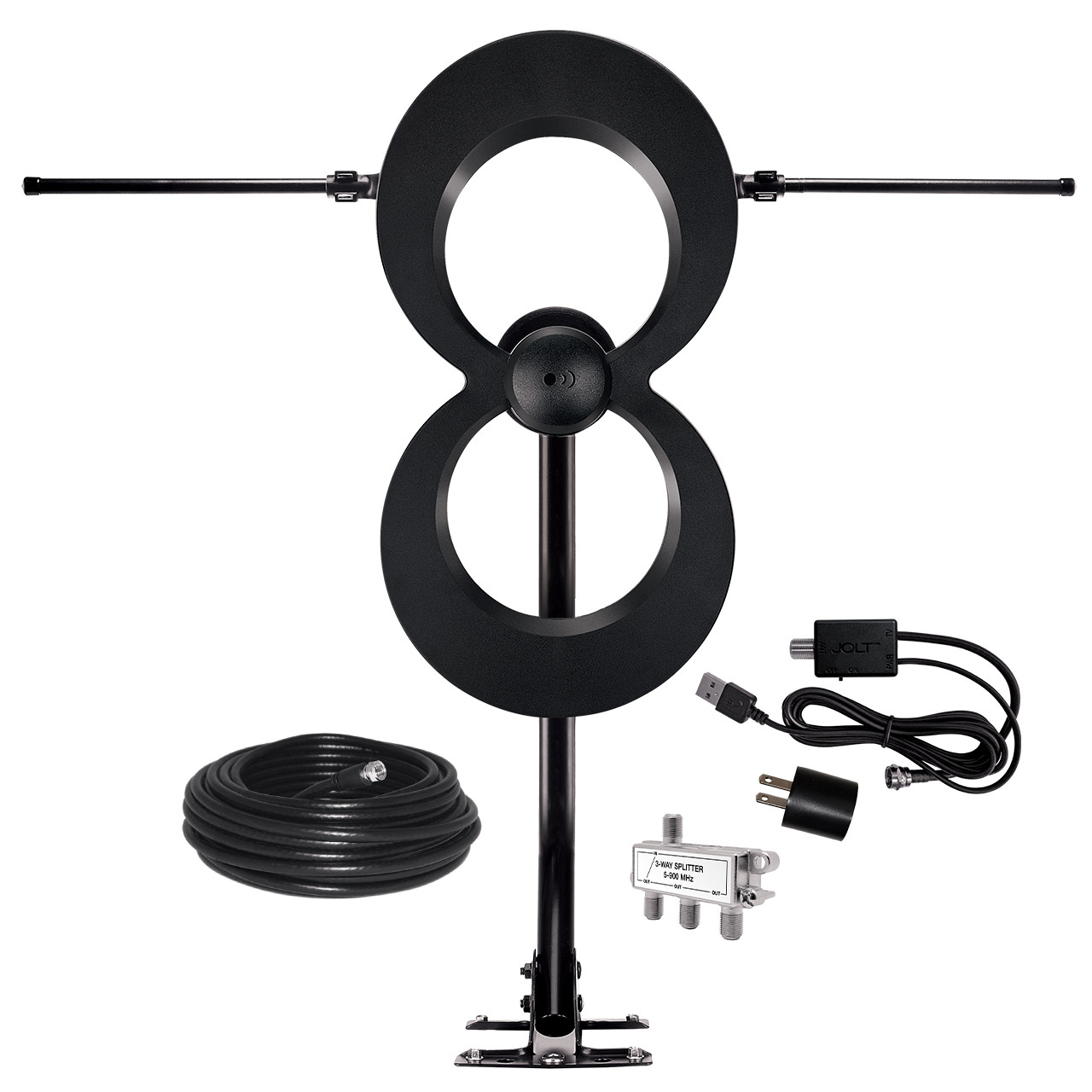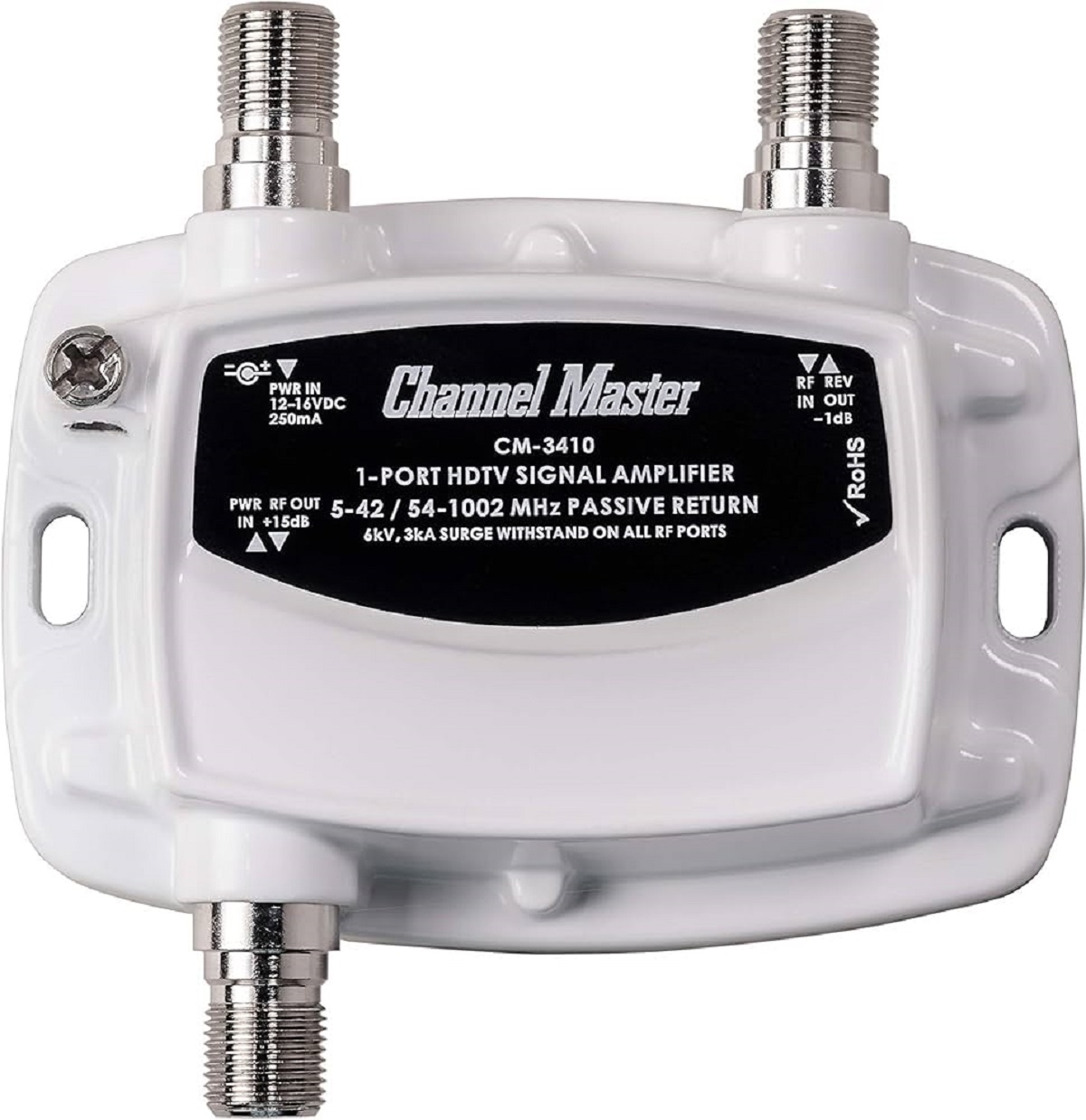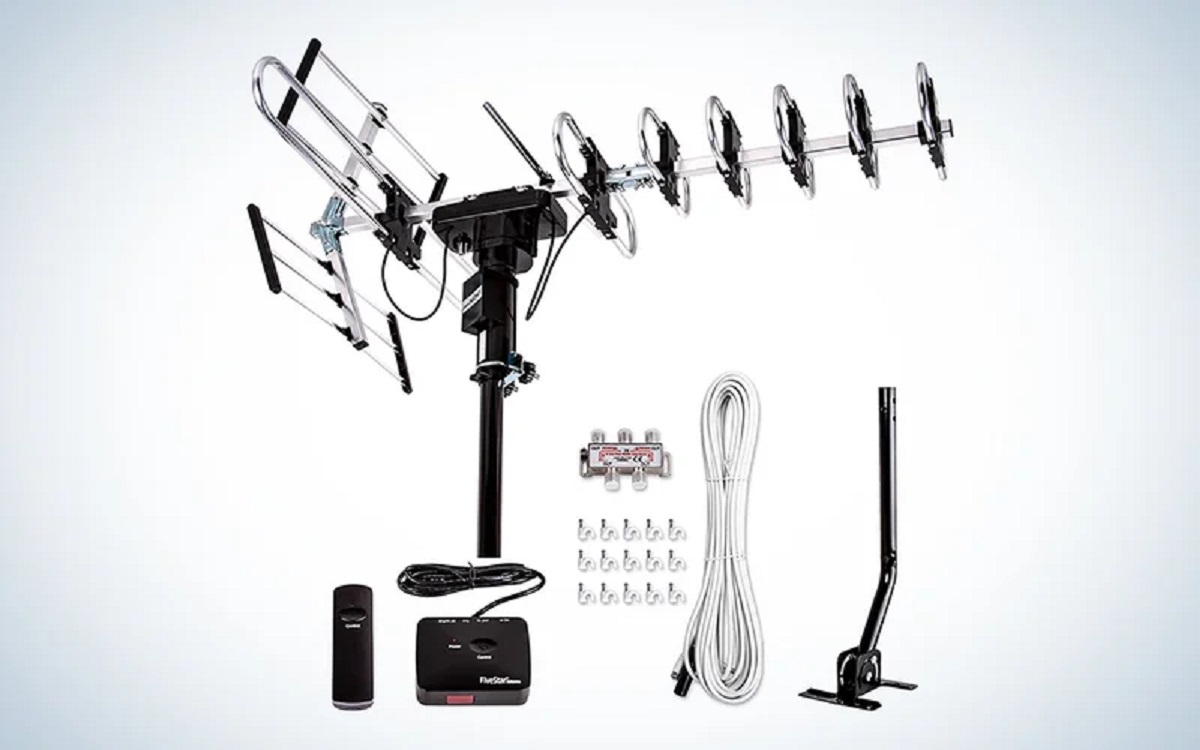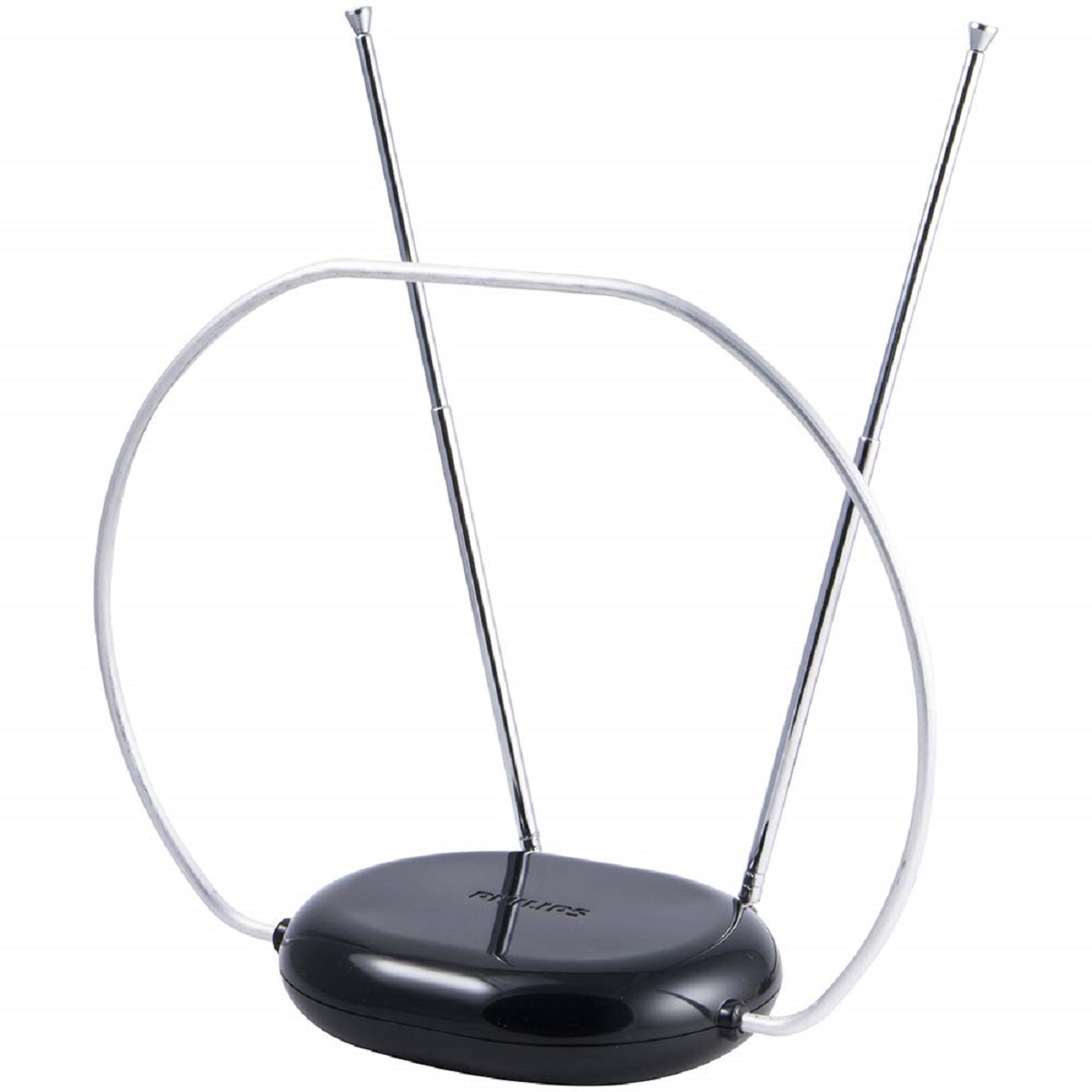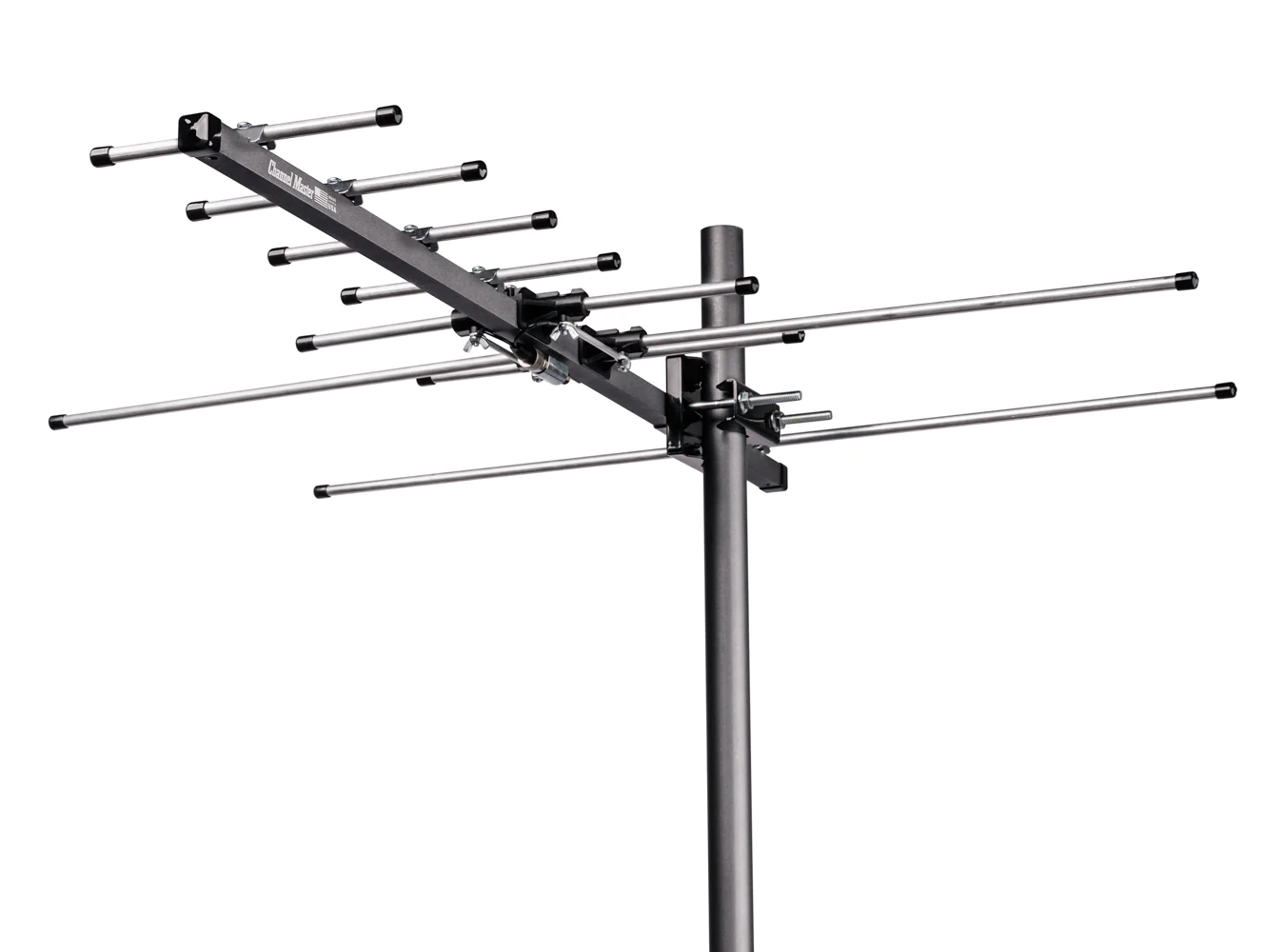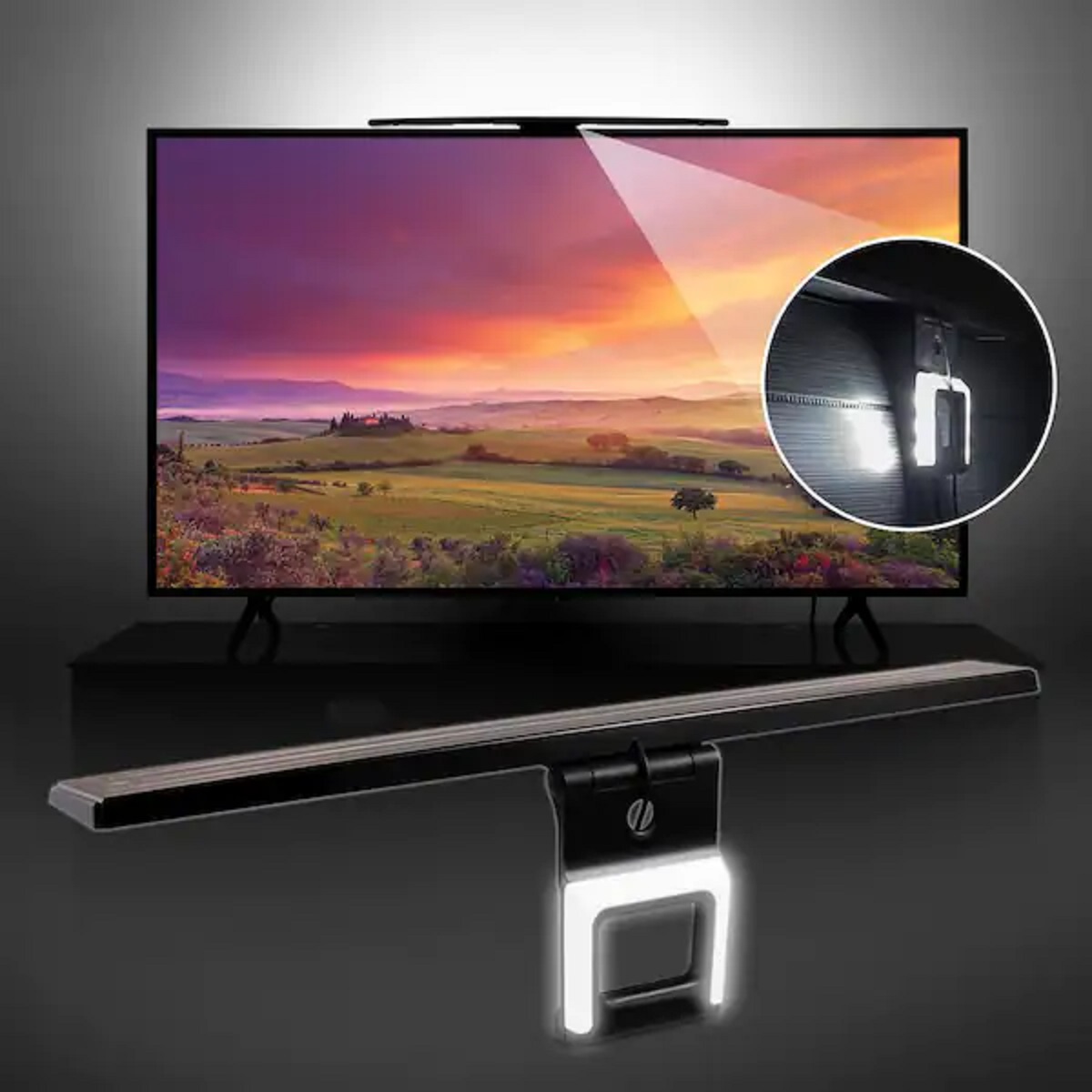Introduction
Are you tired of paying for expensive cable or satellite TV subscriptions? Do you want to access free over-the-air channels with superior picture quality? Building your own UHF VHF TV antenna might be the perfect solution for you. With a little bit of knowledge and some basic tools, you can create an antenna that will capture signals from both UHF (Ultra High Frequency) and VHF (Very High Frequency) bands, offering you a wide range of channels to enjoy.
Understanding the difference between UHF and VHF frequencies is essential for designing and building an effective TV antenna. UHF frequencies are higher in frequency range and are typically used for digital television broadcasting, while VHF frequencies are lower and are used for both digital and analog broadcasting. By combining both UHF and VHF elements in your TV antenna, you can ensure that you receive all available channels in your area.
In this guide, we will walk you through the process of building a UHF VHF TV antenna step by step. We will cover the materials and tools you’ll need, the design considerations, and the construction process. By the end of this guide, you’ll have a functional TV antenna that will allow you to enjoy high-quality digital and analog TV channels without a costly subscription.
Before we dive into the details, it’s important to note that building a UHF VHF TV antenna requires some basic knowledge of electronics and handyman skills. It’s also important to consider local regulations and restrictions regarding antenna installations, as some areas may have specific rules that need to be followed. With that in mind, let’s get started on our journey to building a UHF VHF TV antenna that will revolutionize your TV viewing experience!
Understanding UHF and VHF Frequencies
Before we embark on the journey of building a UHF VHF TV antenna, it’s crucial to have a solid understanding of UHF and VHF frequencies. These two frequency bands play a vital role in broadcasting television signals, and knowing their differences will help us design an effective antenna.
UHF, which stands for Ultra High Frequency, refers to the frequency range between 300 MHz (Megahertz) and 3 GHz (Gigahertz). This frequency band is widely used for television broadcasting, especially for digital channels. UHF signals are known for their higher frequency and shorter wavelength, which allows them to carry more information. They are also less susceptible to interference from physical obstacles like buildings or trees.
VHF, on the other hand, stands for Very High Frequency and has a frequency range between 30 MHz and 300 MHz. This frequency band is used for both analog and digital broadcasting. VHF signals have a longer wavelength compared to UHF signals, which makes them more suitable for long-range transmission. However, VHF signals can be more prone to interference from obstacles, as their longer wavelength can be absorbed or reflected by buildings and other objects.
When it comes to television broadcasting, UHF channels typically offer higher bandwidth and can transmit more data, resulting in better picture quality. However, VHF channels are still essential as they provide coverage over longer distances and can be more reliable in certain geographical areas.
It’s important to note that different regions and countries may allocate specific frequency ranges for UHF and VHF channels. Therefore, understanding the frequency allocations in your area is crucial to ensure that your antenna can pick up all the available TV channels.
By combining both UHF and VHF elements in our TV antenna design, we can create a versatile and efficient antenna that can capture signals from a wide range of channels. In the next section, we’ll explore the materials and tools we’ll need to start building our UHF VHF TV antenna.
Materials and Tools Needed
Now that we have a clear understanding of UHF and VHF frequencies, let’s take a look at the materials and tools we’ll need to build our own UHF VHF TV antenna. Gathering all the necessary supplies upfront will ensure a smooth and efficient construction process.
Here are the materials you’ll need:
- Coaxial cable: This cable will transmit the TV signals from the antenna to your TV. Make sure to choose a length that suits your installation needs.
- Antenna wire: This wire will be used to construct the antenna elements and provide the necessary reception capability.
- Balun transformer: A balun transformer converts the unbalanced signal from the antenna to a balanced signal that can be easily transferred through the coaxial cable.
- Wood or PVC pipe: This will be used to create the framework for your antenna. You can choose either wood or PVC pipe based on your preference and availability.
- Screws, nuts, and bolts: These will be used to secure the various components of the antenna together.
- Mounting brackets: Depending on your installation setup, you may need mounting brackets to affix your antenna to a pole or mast.
Now let’s move on to the tools you’ll need:
- Wire cutter: A wire cutter will be important for cutting the antenna wire to the desired lengths.
- Wire stripper: This tool will help you remove the insulation from the antenna wire, allowing for proper connectivity.
- Screwdriver: You’ll need a screwdriver to tighten the screws and bolts during the assembly process.
- Drill: If you choose to use a wood frame, a drill will be necessary to create holes for mounting the various components.
- Measuring tape: Accurate measurements are crucial for constructing an effective antenna. A measuring tape will help you ensure the correct dimensions.
Make sure to gather all the materials and tools before you start building your UHF VHF TV antenna. This will save you time and ensure a smooth construction process. In the next section, we’ll dive into the design considerations for your antenna.
Designing the Antenna
Designing the antenna is a crucial step in building an effective UHF VHF TV antenna. The design will determine the antenna’s ability to capture signals from a wide range of channels. Here are some key considerations when designing your antenna:
- Element lengths: The length of the antenna elements determines the frequency at which they resonate, allowing them to receive specific channels. You’ll need to calculate the element lengths based on the frequencies of the UHF and VHF channels you want to receive. Various online calculators and resources can help you determine the correct element lengths for your desired channels.
- Element spacing: The spacing between the antenna elements plays a role in the antenna’s ability to capture signals. You’ll need to maintain proper spacing to ensure optimal signal reception and minimize interference between elements.
- Director and reflector elements: In addition to the main receiving elements, consider adding director and reflector elements to enhance the antenna’s focus and gain. These additional elements help improve signal strength and minimize interference.
- Directionality: Depending on your location and the distribution of TV transmitters, you might want to design your antenna to be either omnidirectional or directional. An omnidirectional antenna captures signals from all directions, while a directional antenna focuses on signals from a specific direction.
When designing your antenna, it’s essential to consider your location, the available channels in your area, and any potential obstacles or interference sources that might affect signal reception. Experimenting with different designs or consulting antenna design experts can help you optimize the performance of your UHF VHF TV antenna.
Once you have a clear design plan in mind, you’re ready to proceed to the next step: building the framework for your antenna. In the following section, we’ll guide you through the process of constructing the antenna’s framework using either wood or PVC pipe.
Building the Framework
Building a sturdy and reliable framework is an important step in constructing a UHF VHF TV antenna. The framework provides support for the antenna elements and ensures their proper alignment for optimal signal reception. Depending on your preference and availability, you can choose to build the framework using either wood or PVC pipe.
If you decide to use wood, follow these steps:
- Measure and cut the wood pieces according to your design plan. This will include the main boom, crossbar, and any additional support elements.
- Assemble the wooden pieces by attaching them together using screws or bolts. Make sure to align the pieces accurately to maintain the structural integrity of the framework.
- If needed, you can reinforce the joints with wood glue for added strength.
- Drill holes in the framework to mount the antenna elements and other components. Ensure that the holes are properly sized and aligned with your design plan.
If you prefer PVC pipe, follow these steps:
- Cut the PVC pipe to the desired lengths. This will include the main boom, crossbar, and support elements.
- Assemble the PVC pipe pieces by connecting them using PVC connectors. Ensure a secure and tight fit to prevent any movement or instability.
- Use PVC cement to bond the pipe joints together for added durability.
- Drill holes in the PVC pipe to mount the antenna elements and other components. Ensure that the holes are properly sized and positioned according to your design plan.
Whichever material you choose, make sure the framework is sturdy and able to withstand environmental conditions. It’s important to consider factors such as wind load, temperature variations, and exposure to moisture. Reinforcing the framework with additional bracing or supports can provide extra stability.
With the framework complete, you are now ready to move on to the next step: constructing the antenna elements. In the following section, we’ll guide you through the process of building the elements to ensure proper signal reception.
Constructing the Elements
The construction of the antenna elements is a critical step in building a UHF VHF TV antenna. The elements are responsible for capturing and receiving the TV signals, and their precise construction is essential for optimal signal reception. Here’s a step-by-step guide on constructing the antenna elements:
- Using the measurements determined during the design phase, cut the antenna wire into the appropriate lengths for each element.
- Strip off the insulation at the ends of the antenna wire using a wire stripper. This exposed section will be used for electrical connections.
- Shape the antenna wire into the desired element configuration, such as a bowtie or a dipole shape. This can be achieved by carefully bending the wire using pliers or your hands.
- If necessary, attach reflector or director elements to the main receiving elements. These additional elements play a crucial role in enhancing the antenna’s focus and gain.
- Ensure that the elements are securely attached to the framework through the pre-drilled holes. Use screws, bolts, or appropriate clamps to fasten the elements in place.
- Double-check the alignment and spacing between the elements, ensuring they match the design specifications. Proper alignment is crucial for optimal signal reception.
- Make sure all connections between the elements and the framework are tight and secure. Loose connections can lead to signal degradation or loss.
Throughout the construction process, it’s important to be precise and meticulous. Small deviations in element length, spacing, or alignment can significantly affect the antenna’s performance. Additionally, be mindful of any sharp edges or protruding wires that may cause injury or damage to nearby objects.
Once you have constructed all the required elements and attached them to the framework, you are ready to proceed to the next step: assembling and mounting the antenna. In the following section, we’ll guide you through this process, ensuring that your UHF VHF TV antenna is properly installed and positioned for optimal signal reception.
Assembling and Mounting the Antenna
With the framework and elements constructed, it’s time to assemble and mount the UHF VHF TV antenna. Proper assembly and installation are crucial to ensure optimal signal reception. Here’s a step-by-step guide to help you with this process:
- Attach the balun transformer to the main boom of the antenna. This component is responsible for converting the unbalanced signal from the antenna elements into a balanced signal that can be transmitted through the coaxial cable.
- Connect the antenna elements to the balun transformer. Ensure that each element is securely connected and has good electrical contact.
- Attach the coaxial cable to the balun transformer. Make sure to properly connect and tighten the cable to prevent any signal loss or interference.
- Route the coaxial cable down the main boom of the antenna, ensuring that it is secure and protected from damage.
- If needed, attach any additional support elements or braces to stabilize the antenna. This will help in preventing movement or misalignment due to wind or other environmental factors.
- Choose an appropriate location for mounting the antenna. Ideally, it should be at a suitable height and position where there are minimal obstructions between the antenna and the TV transmitters.
- Mount the antenna securely using mounting brackets, clamps, or other appropriate hardware. Follow the manufacturer’s instructions or local regulations for proper installation.
- Ensure that the antenna is aligned in the desired direction, especially for directional antennas. This can be achieved by carefully adjusting the position and angle of the antenna.
During the assembly and mounting process, it’s important to take safety precautions. Use proper equipment, such as ladders or safety harnesses, to prevent falls or accidents. Additionally, be aware of any power lines or other hazards when selecting the antenna’s location.
Once the antenna is assembled and securely mounted, you are ready to move on to the next step: testing and adjusting the antenna to maximize signal reception. In the next section, we’ll guide you through this process to ensure that your UHF VHF TV antenna is perfectly tuned for optimal performance.
Testing and Adjusting the Antenna
After assembling and mounting your UHF VHF TV antenna, it’s essential to properly test and adjust it to maximize signal reception. Proper testing and adjustment will help ensure that you can enjoy a wide range of channels with excellent picture quality. Here’s a step-by-step guide to help you with this process:
- Connect the coaxial cable from the antenna to your TV or a signal analyzer device.
- Perform a channel scan on your TV or analyzer to detect the available channels.
- Check the signal strength and quality of each channel. Use the signal quality indicators on your TV or analyzer to assess the reception.
- If you are not receiving all the desired channels or if the signal quality is poor, make the following adjustments:
- Direction: If your antenna is directional, try adjusting the aim or angle slightly to optimize signal reception. Small adjustments can make a significant difference in signal strength.
- Element length: If certain channels are weak or not coming in at all, you may need to fine-tune the length of the specific elements. Adjusting the length can help optimize the reception for those specific frequencies.
- Element spacing: Experimenting with the spacing between the elements can also help improve signal reception. Varying the distance between elements can have an impact on the antenna’s ability to capture signals effectively.
- Antenna placement: If possible, try relocating the antenna to a different position. Sometimes, a simple change in the antenna’s height or positioning can result in better signal reception.
- Signal amplifier: In areas with weak signals, you may consider adding a signal amplifier to boost the signal strength. These amplifiers can enhance the overall reception capabilities of your antenna.
- After making any adjustments, perform another channel scan to assess the impact on signal reception. Continue adjusting and testing until you achieve satisfactory signal strength and quality for your desired channels.
Remember to be patient during this process, as fine-tuning an antenna may require some trial and error. Take note of the adjustments you make and their effects on signal reception to help you track your progress.
It’s important to mention that signal reception can also be affected by external factors such as weather conditions or interference from nearby electronic devices. If you notice sudden changes in signal strength, consider these factors as potential causes and make adjustments accordingly.
Once you are satisfied with the performance of your UHF VHF TV antenna, you can sit back, relax, and enjoy a wide range of free over-the-air channels with superior picture quality.
Conclusion
Building your own UHF VHF TV antenna is a rewarding endeavor that can save you money and provide access to a wide range of free over-the-air channels. By understanding UHF and VHF frequencies, gathering the necessary materials and tools, designing an effective antenna, and carefully constructing and adjusting it, you can enjoy high-quality TV signals without costly cable or satellite subscriptions.
Throughout the process, it’s crucial to prioritize safety and adhere to local regulations regarding antenna installations. Always take precautions when working at heights or near power lines, and consult professionals if needed.
Remember that fine-tuning your antenna may require patience and experimentation. Adjusting the elements, direction, spacing, and placement can significantly impact signal reception, allowing you to optimize your viewing experience.
With your UHF VHF TV antenna built and properly adjusted, you can enjoy free access to a variety of digital and analog channels, all delivered with superior picture quality. Say goodbye to monthly subscriptions and hello to a cost-effective and efficient way of enjoying television.
Now, gather the materials, follow the steps outlined in this guide, and embark on the journey of building your UHF VHF TV antenna. Revolutionize your TV viewing experience and embrace the freedom of over-the-air channels!







